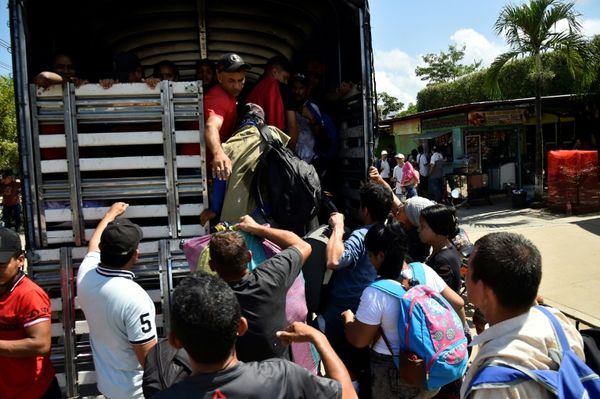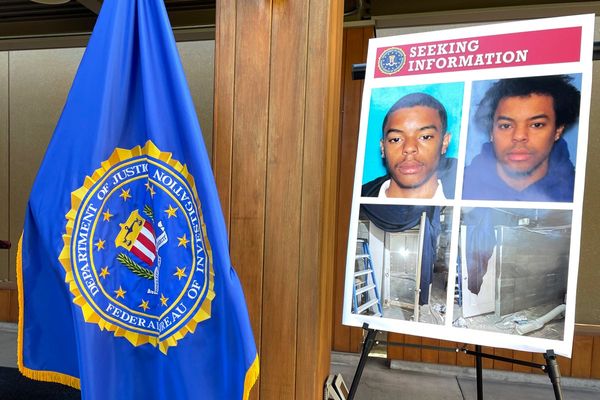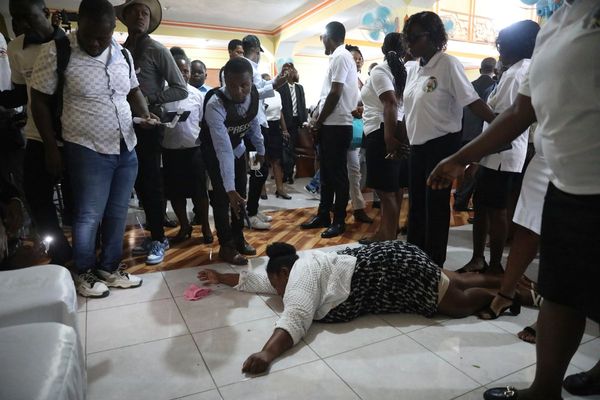AYESHA RASCOE, HOST:
Now we hear from the vast open ranges of Colombia, a place where cowboys keep track of cattle through days and days of hard work, occasionally eased with some cowboy music. Like American cowboys, they're storied in the country's history, but they don't wear cowboy boots. Reporter John Otis spent some time on the Colombian range.
(SOUNDBITE OF HORSES TROTTING)
JOHN OTIS, BYLINE: Sitting atop horses, these hired ranch hands are driving cattle through the pancake-flat prairies of eastern Colombia.
(CROSSTALK)
OTIS: Known as llaneros - that's Spanish for plainsmen - the men have to cover a lot of ground. This 4,000-acre ranch stretches to the horizon and beyond. It's a gorgeous setting for work that often seems brutal.
(SOUNDBITE OF COW GRUNTING)
OTIS: Back at the corral, the llaneros mark the cattle with red-hot branding irons to identify who they belong to.
UNIDENTIFIED LLANERO #1: (Speaking Spanish).
UNIDENTIFIED LLANERO #2: (Speaking Spanish).
OTIS: Also jarring is the fact that rather than donning cowboy boots, most llaneros go barefoot. They include Antonio Cova, who's been working on ranches since he was 13 and who says his unshod feet are as leathery as animal paws.
ANTONIO COVA: (Speaking Spanish).
OTIS: "It's a tradition," he explains. "You build up calluses on your feet, so nothing hurts them."
Llaneros have been proving their toughness for centuries. Expert horsemen and marksmen, they fought alongside South American liberator Simon Bolivar in the early 1800s to help secure Colombia's independence from Spain.
(SOUNDBITE OF METAL CLANGING)
OTIS: In fact, some llaneros, like Antonio Cantor, still go around with guns.
ANTONIO CANTOR: (Speaking Spanish).
OTIS: Pulling a pistol from his holster, he says, "The revolver used to be a normal part of your wardrobe."
(SOUNDBITE OF HORSES TROTTING)
OTIS: These days, llaneros remain key to Colombia's cattle industry. Unlike the U.S., most ranchers here can't afford to send their herds to be fattened up at large commercial feedlots. However, pasture land is relatively cheap.
Abelardo Bravo, a Bogota businessman who bought this ranch 13 years ago, says he couldn't run it without his trusty llaneros.
ABELARDO BRAVO: (Speaking Spanish).
OTIS: "They're courageous people," he says. "A llanero won't back down from anything. He might weigh 150 pounds, but he'll take on a 900-pound bull."
Still, llanero life is not all muscle and machismo.
(SOUNDBITE OF MILK SLOSHING)
UNIDENTIFIED LLANERO #3: (Singing in Spanish).
OTIS: While milking the cows before dawn, one of the llaneros softly sings so the animals will relax and give more milk. Indeed, llaneros have their own genre of music and are quick to break into song.
CANTOR: (Singing in Spanish, playing cuatro).
OTIS: And Cantor, the pistol-packing llanero, plays a small four-string guitar known as the cuatro.
CANTOR: (Singing in Spanish, playing cuatro).
OTIS: He sometimes wonders whether llanero traditions will last. Ranches are gradually getting smaller and require fewer workers. Some llaneros are taking easier jobs in the cities. But after nearly 70 years of raising cattle in the countryside, Cantor says he's not budging.
CANTOR: (Speaking Spanish).
OTIS: "This is where I was born and raised," he says. "This is where I grew old, and this is where I want to die."
For NPR News, I'm John Otis in the eastern plains of Colombia. Transcript provided by NPR, Copyright NPR.







